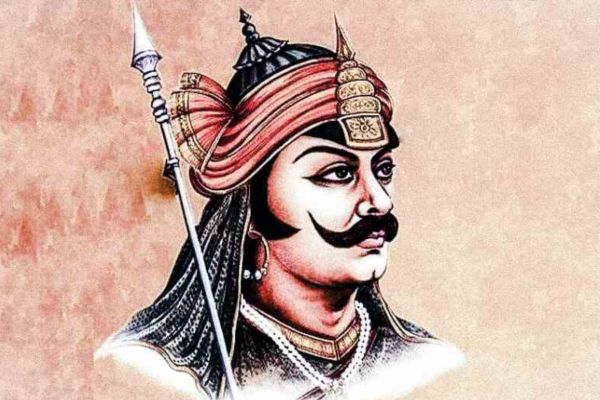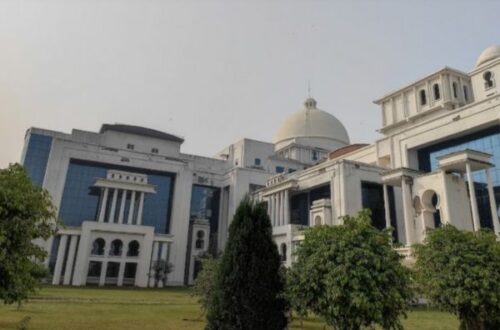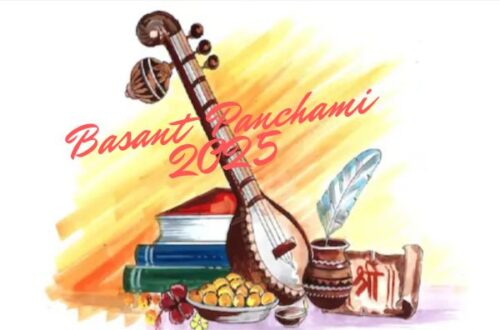
Maharana Pratap: The Legendary Warrior Who Fought for Mewar’s Freedom
India’s rich history is filled with stories of remarkable warriors who fought to defend their kingdoms, culture, and people. Among these, Maharana Pratap, the king of Mewar, stands out as one of the most iconic figures in Indian history. Known for his relentless spirit, bravery, and love for his land, Maharana Pratap’s legacy continues to inspire generations. This post delves into the life and contributions of this legendary warrior and how his values resonate with the youth of today.
Table of Contents
- Early Life and Background
- Ascension to the Throne of Mewar
- The Battle of Haldighati
- Maharana Pratap’s Guerrilla Warfare
- Chetak – The Legendary Horse
- Maharana Pratap’s Personal Life and Leadership
- Cultural and Social Contributions
- Maharana Pratap’s Legacy in Modern India
- Conclusion
1. Early Life and Background of Maharana Pratap
Maharana Pratap was born on May 9, 1540, in Kumbhalgarh Fort in the Rajput kingdom of Mewar, Rajasthan, to Maharana Udai Singh II and Maharani Jaivantabai. Growing up in a royal household, he was trained in martial arts, sword fighting, and military strategy. His early life was characterized by discipline, humility, and a strong sense of responsibility.
Pratap’s father, Udai Singh II, was the ruler of Mewar, and his reign was marked by constant tensions with the Mughal Empire, which had begun to expand under Emperor Akbar. Despite the royal luxury, young Pratap was introduced to the harsh realities of governance and military strategy early on.
| Date | Event |
|---|---|
| 1540 | Birth of Maharana Pratap in Kumbhalgarh Fort |
| 1568 | Fall of Chittorgarh to the Mughal forces, Udai Singh II flees to Udaipur |
| 1568-1572 | Maharana Pratap begins his training in warfare and leadership |
| 1572 | Maharana Pratap ascends to the throne of Mewar |
2. Ascension to the Throne of Mewar
After the fall of Chittorgarh in 1568 and the subsequent relocation of the capital to Udaipur, Maharana Pratap was crowned the king of Mewar in 1572. His ascension was marked by the challenges of safeguarding his kingdom against the growing influence of the Mughal Empire.
While Akbar sought to establish his dominance over the Rajputs, Pratap refused to bow down to Mughal rule. Unlike other Rajput rulers who sought alliances with the Mughals, Pratap chose a path of defiance, determined to protect his sovereignty at all costs.
3. The Battle of Haldighati
The Battle of Haldighati, fought on June 18, 1576, is one of the most famous chapters in Maharana Pratap’s life. Despite being heavily outnumbered, Pratap led his forces into battle against the Mughal army led by Man Singh of Amber, a trusted general under Emperor Akbar.
In this fierce battle, the Rajputs fought valiantly, and while the battle ended inconclusively, it became a symbol of resistance against the Mughal Empire. Although Pratap’s forces suffered heavy casualties, including his brother, Shakti Singh, the Maharana’s bravery was widely acknowledged.
| Aspect | Maharana Pratap | Mughal Army |
|---|---|---|
| Number of Troops | 20,000 Rajput soldiers | Over 80,000 Mughal soldiers |
| Outcome | No decisive victory, but Pratap’s resistance was remarkable | Mughal army forced to retreat |
| Key Event | Battle of Haldighati symbolized Rajput unity and resistance against Mughal dominance |
4. Maharana Pratap’s Guerrilla Warfare
After the Battle of Haldighati, Maharana Pratap continued his resistance against the Mughals through guerrilla warfare. He didn’t have the resources of a grand empire, but his leadership and innovative military strategies allowed him to keep the Mughal forces at bay.
His strategy of striking quickly, ambushing supply routes, and utilizing the terrain of the Aravalli hills to his advantage helped him to regain much of the territory he had lost. His resilience and adaptability made him an enduring symbol of defiance.
| Strategy | Details |
|---|---|
| Guerrilla Warfare | Utilizing the terrain of the Aravalli mountains to outmaneuver the Mughals |
| Ambushing Supply Lines | Attacking Mughal convoys and supply routes to weaken their hold on Mewar |
| Warrior Skills | Expert in sword fighting, archery, and cavalry tactics |
5. Chetak – The Legendary Horse
Maharana Pratap’s horse, Chetak, became legendary for its courage during the Battle of Haldighati. Chetak was not only a skilled war horse but also displayed an extraordinary bond with his master. Despite being gravely injured during the battle, Chetak carried Maharana Pratap to safety, only to succumb to his injuries afterward.
This act of bravery made Chetak a symbol of loyalty and courage, with statues of the horse being erected in his honor across Rajasthan.
| Aspect | Details |
|---|---|
| Name | Chetak |
| Breed | Likely a Rajput breed, known for strength, agility, and endurance |
| Color | Blue or grey |
| Height | Estimated around 14 to 15 hands (56 to 60 inches at the shoulder) |
| Key Characteristics | Strong, swift, majestic, and highly intelligent |
| Role | Trusted warhorse of Maharana Pratap, played a pivotal role in battle |
| Famous Event | Battle of Haldighati (1576), where Chetak displayed extreme courage and loyalty |
| Physical Features | Fine coat, graceful gait, robust build, and a notable speed |
| Legendary Moment | Carried Maharana Pratap away from the battlefield despite being mortally wounded |
| Sacrifice | After ensuring his master’s safety, Chetak collapsed and died from his injuries |
| Legacy | Symbol of loyalty, bravery, and sacrifice; commemorated with statues and memorials in Rajasthan |
| Memorial Locations | Statues and memorials in Udaipur, Haldighati, and other locations across Rajasthan |
6. Maharana Pratap’s Personal Life and Leadership
Maharana Pratap was not just a warrior; he was a compassionate and visionary leader. His leadership style was marked by humility, discipline, and a deep concern for his people. Unlike many monarchs, he preferred living simply and always put the welfare of his subjects first.
He is said to have lived in the forests of Mewar for much of his life, enduring hardship while continuing to fight for the freedom of his kingdom. His commitment to his people was reflected in his efforts to rebuild Mewar’s economy, infrastructure, and military strength.
| Aspect | Maharana Pratap’s Leadership |
|---|---|
| Simplicity | Lived a simple, austere life despite being a king |
| People-Centric | Focused on the well-being of his subjects |
| Warrior Leadership | Led from the front in all battles, inspiring his army |
7. Cultural and Social Contributions
Apart from his military prowess, Maharana Pratap made significant cultural contributions to the kingdom of Mewar. He supported the arts, literature, and architecture during his reign. Pratap’s rule saw a revival of Rajput culture and pride.
Pratap’s patronage of the Mewar School of Painting, which later became famous for its exquisite miniature paintings, played a key role in preserving the rich artistic heritage of Rajasthan.
| Area | Contribution |
|---|---|
| Art & Culture | Patronage of Mewar School of Painting |
| Architecture | Supported the construction of forts and palaces |
| Society | Encouraged social harmony and the protection of Rajput traditions |
8. Maharana Pratap’s Legacy in Modern India
Maharana Pratap’s life and deeds continue to inspire millions. His unwavering spirit in the face of adversity has made him an enduring symbol of courage, resilience, and patriotism. His refusal to surrender to foreign rule resonates with India’s fight for independence, making him a national hero.
Today, statues, monuments, and memorials dedicated to Maharana Pratap can be found across India, particularly in Rajasthan. His legacy is celebrated in schools, universities, and through literature, ensuring that future generations understand the sacrifices made by this great warrior.
9. Maharana Pratap Jayanti
Maharana Pratap Jayanti is celebrated every year on May 9th, the birth anniversary of the legendary warrior Maharana Pratap. This day holds immense significance in the hearts of people, particularly in Rajasthan, as it honors the bravery, leadership, and unwavering spirit of the king who fought tirelessly to defend his kingdom and heritage from foreign invasion.
The day is observed with great enthusiasm and reverence across India, with special events and programs that celebrate the life and achievements of Maharana Pratap. On this day, tributes are paid to the king through processions, speeches, cultural performances, and the decoration of his statues and monuments. Schools, institutions, and government bodies often organize functions where students and officials remember his valor, loyalty, and sacrifices.
Significance of Maharana Pratap Jayanti
Maharana Pratap Jayanti is more than just a day of remembrance. It is a celebration of the qualities that Maharana Pratap embodied – courage, resilience, and a deep love for his people and land. His refusal to surrender to Emperor Akbar’s Mughal forces and his determination to maintain the sovereignty of Mewar make him an icon of independence and patriotism.
The day also serves as a reminder to the younger generation of the importance of standing firm for one’s principles, no matter how tough the challenges may be. Maharana Pratap’s legacy teaches us that true leaders prioritize the welfare of their people over personal gain and that love for one’s country is the highest form of patriotism.
How is Maharana Pratap Jayanti Celebrated?
- Statue Worship: On Maharana Pratap Jayanti, people gather to offer flowers and pay homage to statues of the king, especially those in Rajasthan, at public places like parks, schools, and temples.
- Rallies and Processions: In cities like Udaipur, Chittorgarh, and Jaipur, rallies and processions are held, where people march in honor of the warrior king, often carrying banners and portraits of Maharana Pratap.
- Cultural Programs: Various cultural programs are organized, including folk dances, music, and plays, showcasing the valor and heroism of Maharana Pratap. Students participate in these programs to educate others about his contributions to history.
- Educational Events: Schools and colleges conduct educational events such as essay writing competitions, debates, and discussions on the life of Maharana Pratap. This helps young people learn about his life and legacy.
Conclusion
Maharana Pratap’s legacy as a fierce warrior, visionary leader, and symbol of undying resistance against foreign domination is an inspiration to all. His life story teaches us that true leadership is not just about ruling a kingdom, but about standing firm for the values of justice, freedom, and honor. As we reflect on his remarkable journey, we are reminded that the spirit of Maharana Pratap lives on in the hearts of every Indian who strives for the welfare of their people and the preservation of their heritage.




